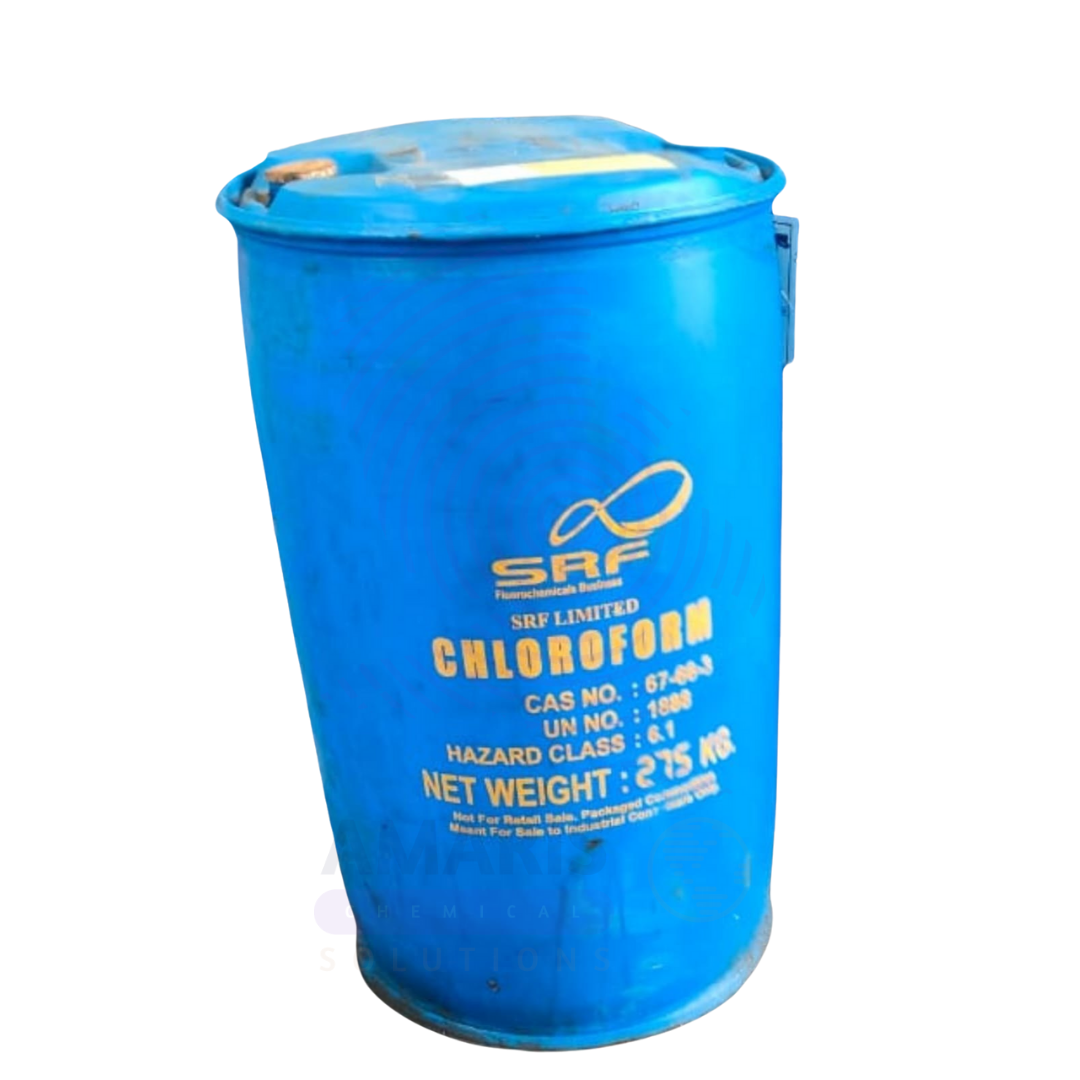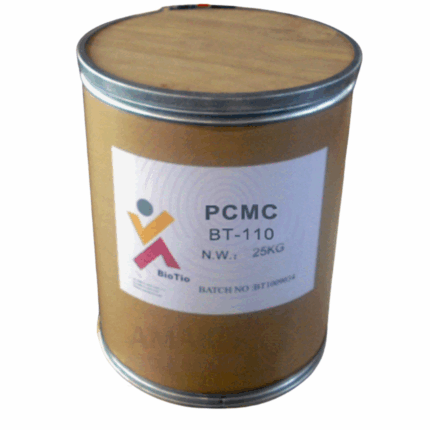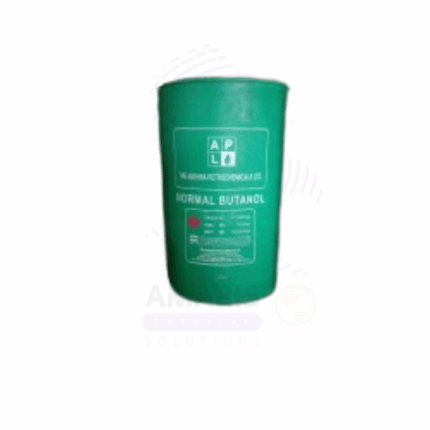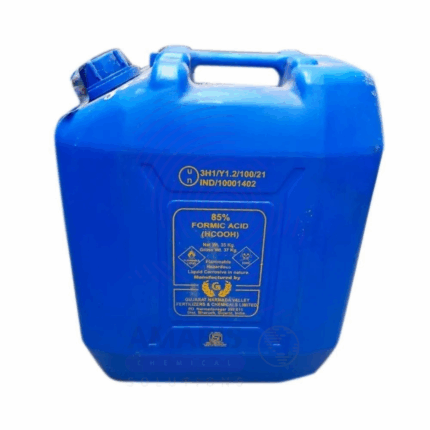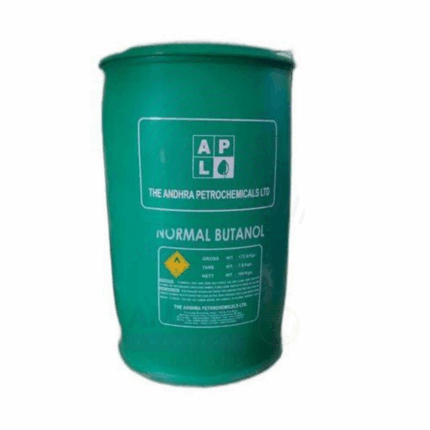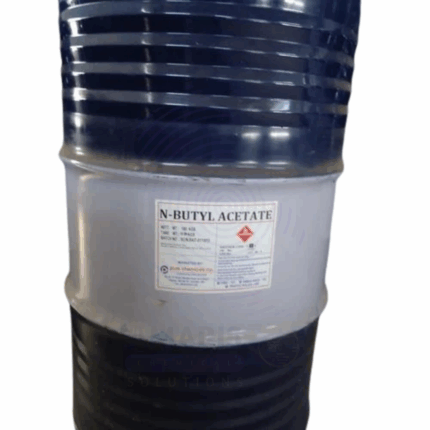Chloroform
Whatsapp Order
Chloroform (Trichloromethane) is a clear, colorless, volatile liquid with a sweet, pleasant odor. It is a widely used organic solvent with excellent solvency for many substances. Historically employed as an anesthetic, chloroform is now primarily used in laboratories and industry for extraction, degreasing, and chemical synthesis. It has moderate volatility and is heavier than air, requiring careful handling to avoid inhalation hazards. Its chemical stability and ability to dissolve fats, alkaloids, and other substances make it valuable in pharmaceutical, chemical, and industrial processes.
Description
Table of Contents
Toggle
Chloroform
Primary Uses
- Pharmaceuticals & Laboratories
- Solvent for extraction and purification of compounds in pharmaceutical manufacturing and research.
- Used in chromatographic processes and analytical chemistry for sample preparation.
- Employed as a reagent and solvent in organic synthesis reactions.
- Industrial Applications
- Used as a solvent for fats, oils, waxes, rubber, and resins.
- Degreasing agent in metal cleaning and industrial manufacturing.
- Utilized in the production of refrigerants and as a precursor in chemical manufacturing.
Secondary Uses
- Historical Medical Use
- Formerly used as an inhalation anesthetic; now largely discontinued due to toxicity.
- Laboratory Research
- Used as a solvent for NMR spectroscopy sample preparation (deuterated chloroform).
KEY PRODUCT FEATURES
1. Basic Identification Attributes
- Chemical Name (IUPAC): Trichloromethane
- Common/Trade Name: Chloroform
- CAS Number: 67-66-3
- HS Code: 2903.39.00
- Molecular Formula: CHCl₃
- Synonyms:
- Trichloromethane
- Methyl trichloride
2. Physical & Chemical Properties
- Physical State: Clear, volatile liquid
- Color & Odor: Colorless; sweet, ether-like odor
- Melting Point: -63.5°C
- Boiling Point: 61.2°C
- Density: 1.49 g/cm³ at 20°C
- Solubility: Slightly soluble in water (~0.8 g/100 mL at 20°C); miscible with organic solvents such as alcohol, ether, and benzene
- Vapor Pressure: 160 mmHg at 20°C
- Stability: Stable under normal conditions but decomposes in presence of light and oxygen producing phosgene, a toxic gas
3. Safety & Hazard Attributes
- Hazard Class (GHS): Toxic, flammable, suspected carcinogen
- NFPA Ratings:
- Health: 3
- Flammability: 1
- Reactivity: 0
- Exposure Limits: OSHA PEL = 2 ppm (8-hour TWA); NIOSH REL = 2 ppm
- Toxicity: Harmful if inhaled or absorbed; causes central nervous system depression, liver and kidney damage; possible carcinogen
- Reactivity: Stable but decomposes under light exposure to toxic phosgene
4. Storage & Handling Attributes
- Storage Conditions: Store in tightly sealed containers away from heat, light, and ignition sources; preferably in cool, dark storage
- Container Type: Glass or metal containers with vapor-tight seals
- Shelf Life: Indefinite if stored properly away from light and moisture
- Special Handling: Use in well-ventilated areas or fume hoods; wear PPE including respirators when necessary
5. Regulatory & Compliance Attributes
- FDA Status: Not approved for pharmaceutical use due to toxicity
- REACH Status: Registered and regulated under EU chemical safety laws
- Transportation: Classified as a hazardous material (Class 6.1 Toxic substance)
- Waste Disposal: Dispose as hazardous waste according to local regulations
6. Environmental & Health Impact
- Ecotoxicity: Toxic to aquatic life with long-lasting effects
- Persistence: Moderately persistent in the environment
- Bioaccumulation: Low potential for bioaccumulation
- Carcinogenicity/Mutagenicity: Classified by IARC as Group 2B (possibly carcinogenic to humans)
- Biodegradability: Slowly biodegradable
SAFETY HANDLING PRECAUTIONS
Safety Handling Precautions
- PPE: Use chemical-resistant gloves, goggles, lab coat, and respirators when handling vapors
- Handling: Avoid inhalation and skin contact; use only in well-ventilated areas or fume hoods
- Storage: Keep container sealed and stored away from heat, sparks, and sunlight
- Hygiene: Wash hands after handling; do not eat, drink, or smoke in work area
First Aid Measures
- Inhalation: Move victim to fresh air; if breathing is difficult, provide oxygen; seek medical attention immediately
- Skin Contact: Remove contaminated clothing; wash skin thoroughly with soap and water; seek medical attention if irritation develops
- Eye Contact: Rinse eyes with plenty of water for at least 15 minutes; seek immediate medical care
- Ingestion: Do not induce vomiting; seek emergency medical assistance immediately
Firefighting Measures
- Fire Hazards: Combustible liquid; emits toxic gases (phosgene, hydrogen chloride) when heated or burning
- Extinguishing Media: Use dry chemical, foam, or carbon dioxide extinguishers; do not use water jet
- Special Precautions: Firefighters must wear full protective gear and self-contained breathing apparatus
- Decomposition Products: Phosgene, hydrogen chloride, carbon monoxide, and carbon dioxide
Related products
Amprolium Hydrochloride BP USP
Amprolium Hydrochloride is a white, odorless, crystalline powder used primarily as a coccidiostat, which means it inhibits the growth of Eimeria species (protozoan parasites) responsible for coccidiosis in poultry and other animals. It works by mimicking thiamine (vitamin B1), thereby competitively inhibiting thiamine uptake by the parasite, disrupting its metabolism, and preventing its proliferation. Amprolium HCl is widely used in veterinary medicine, especially in poultry farming, and is often included in feed or drinking water. It complies with BP 2008 and USP 32 pharmacopeial standards.
Butanol
Butanol (also known as n-Butanol or Normal Butanol) is a clear, colorless liquid with a mild, alcoholic odor. It is a four-carbon primary alcohol with the chemical formula C4H10O. Butanol is moderately soluble in water and miscible with many organic solvents. Its physical and chemical properties make it a versatile solvent and chemical intermediate. Butanol indicates a high purity grade often used in industrial, pharmaceutical, and chemical synthesis applications.
Formic Acid
Formic Acid (methanoic acid) is the simplest carboxylic acid, typically supplied as an 85% aqueous solution. It is a colorless liquid with a pungent, penetrating odor and strong acidic properties. Formic Acid naturally occurs in insect stings and plant secretions and is widely used in chemical synthesis, agriculture, textile, leather, and rubber industries. The 85% solution balances potency and safe handling for industrial applications. It serves as a preservative, antibacterial agent, and intermediate chemical in numerous manufacturing processes.
Normal Butanol
Normal Butanol is a straight-chain primary alcohol with the chemical formula C4H10O. It is a colorless, flammable liquid with a characteristic alcoholic odor. Known for its good solvent properties and moderate evaporation rate, n-Butanol is widely used in industrial applications such as solvents for paints, coatings, adhesives, and as an intermediate in chemical synthesis.
Normal Butyl Acetate
Normal Butyl Acetate (n-Butyl Acetate) is a clear, colorless, flammable liquid with a sweet, fruity odor. It is an ester formed by the reaction of acetic acid and n-butanol. Widely used as a solvent in various industries, it offers excellent solvency for many resins and coatings, making it a preferred choice in paints, adhesives, and inks. Its moderate evaporation rate contributes to good application properties.
Normal Hexane
Product Description
Normal Hexane is a colorless, highly flammable liquid hydrocarbon with the chemical formula C6H14. It belongs to the aliphatic hydrocarbon family and is primarily used as a solvent due to its excellent ability to dissolve oils, fats, and various organic compounds. It has a low boiling point and evaporates quickly, making it ideal for industrial and laboratory applications.Toluene
Toluene is a clear, colorless aromatic hydrocarbon solvent with a distinct sweet odor. It is widely used as an industrial solvent and chemical feedstock due to its excellent solvency, volatility, and chemical stability. Toluene plays a critical role in the production of paints, coatings, adhesives, rubber, and various chemicals. It is also used as a fuel additive and in the manufacture of explosives and pharmaceuticals. Its versatility makes it a cornerstone in multiple industrial sectors.
Xylene
Xylene is a clear, colorless, flammable aromatic hydrocarbon solvent consisting of three isomers: ortho-, meta-, and para-xylene. It is widely utilized in various industries for its excellent solvency, chemical stability, and moderate evaporation rate. Xylene serves as a key raw material in chemical manufacturing and an effective solvent in coatings, adhesives, inks, and cleaning applications.


 Preservatives(food)
Preservatives(food) Flavor Enhancers
Flavor Enhancers Acidulants
Acidulants Sweeteners
Sweeteners Antioxidants
Antioxidants Colorants(food)
Colorants(food) Nutraceutical Ingredients (food)
Nutraceutical Ingredients (food) Nutrient Supplements
Nutrient Supplements Emulsifiers
Emulsifiers
 Collectors
Collectors Dust Suppressants
Dust Suppressants Explosives and Blasting Agents
Explosives and Blasting Agents Flocculants and Coagulants
Flocculants and Coagulants Frothers
Frothers Leaching Agents
Leaching Agents pH Modifiers
pH Modifiers Precious Metal Extraction Agents
Precious Metal Extraction Agents
 Antioxidants(plastic)
Antioxidants(plastic) Colorants (Pigments, Dyes)
Colorants (Pigments, Dyes) Fillers and Reinforcements
Fillers and Reinforcements Flame Retardants
Flame Retardants Monomers
Monomers Plasticizers
Plasticizers Polymerization Initiators
Polymerization Initiators Stabilizers (UV, Heat)
Stabilizers (UV, Heat)
 Antifoaming Agents
Antifoaming Agents Chelating Agents
Chelating Agents Coagulants and Flocculants
Coagulants and Flocculants Corrosion Inhibitors
Corrosion Inhibitors Disinfectants and Biocides
Disinfectants and Biocides Oxidizing Agents
Oxidizing Agents pH Adjusters
pH Adjusters Scale Inhibitors( water)
Scale Inhibitors( water)
 Antioxidants(cosmetic)
Antioxidants(cosmetic) Emollients
Emollients Fragrances and Essential Oils
Fragrances and Essential Oils Humectants
Humectants Preservatives
Preservatives Surfactants(cosmetic)
Surfactants(cosmetic) Thickeners
Thickeners UV Filters
UV Filters
 Fertilizers
Fertilizers Soil Conditioners
Soil Conditioners Plant Growth Regulators
Plant Growth Regulators Animal Feed Additives
Animal Feed Additives Biostimulants
Biostimulants Pesticides (Herbicides, Insecticides, Fungicides)
Pesticides (Herbicides, Insecticides, Fungicides)
 Active Pharmaceutical Ingredients (APIs)
Active Pharmaceutical Ingredients (APIs) Excipients
Excipients Solvents(pharmaceutical)
Solvents(pharmaceutical) Antibiotics
Antibiotics Antiseptics and Disinfectants
Antiseptics and Disinfectants Vaccine Adjuvants
Vaccine Adjuvants Nutraceutical Ingredients (pharmaceutical)
Nutraceutical Ingredients (pharmaceutical) Analgesics & Antipyretics
Analgesics & Antipyretics
 Analytical Reagents
Analytical Reagents Solvents(lab)
Solvents(lab) Chromatography Chemicals
Chromatography Chemicals Spectroscopy Reagents
Spectroscopy Reagents microbiology-and-cell-culture-reagents
microbiology-and-cell-culture-reagents Molecular Biology Reagents
Molecular Biology Reagents Biochemical Reagents
Biochemical Reagents Inorganic and Organic Standards
Inorganic and Organic Standards Laboratory Safety Chemicals
Laboratory Safety Chemicals Specialty Laboratory Chemicals(Special Laboratory Equipment)
Specialty Laboratory Chemicals(Special Laboratory Equipment)
 Demulsifiers
Demulsifiers Hydraulic Fracturing Fluids
Hydraulic Fracturing Fluids Scale Inhibitors(oil)
Scale Inhibitors(oil) Surfactants(oil)
Surfactants(oil) Drilling Fluids
Drilling Fluids
 Dyes and Pigments
Dyes and Pigments Bleaching Agents
Bleaching Agents Softening Agents
Softening Agents Finishing Agents
Finishing Agents Antistatic Agents
Antistatic Agents
 Admixtures
Admixtures Waterproofing Agents
Waterproofing Agents Sealants and Adhesives
Sealants and Adhesives Curing Compounds
Curing Compounds Concrete Repair Chemicals
Concrete Repair Chemicals Anti-Corrosion Coatings
Anti-Corrosion Coatings
 Surfactants(cleaning)
Surfactants(cleaning) Builders
Builders Enzymes
Enzymes Solvents (Cleaning)
Solvents (Cleaning) Fragrances
Fragrances
 Electronic Chemicals
Electronic Chemicals Catalysts
Catalysts Lubricants
Lubricants Photographic Chemicals
Photographic Chemicals Refrigerants
Refrigerants Automotive chemicals
Automotive chemicals Pyrotechnic Chemicals
Pyrotechnic Chemicals
 Biodegradable Surfactants
Biodegradable Surfactants Bio-based Solvents
Bio-based Solvents Renewable Polymers
Renewable Polymers Carbon Capture Chemicals
Carbon Capture Chemicals Wastewater Treatment Chemicals
Wastewater Treatment Chemicals
 Pigments
Pigments Solvents(paint)
Solvents(paint) Specialty Coatings
Specialty Coatings Binders/Resins
Binders/Resins Additives
Additives Driers
Driers Anti-Corrosion Agents
Anti-Corrosion Agents Functional Coatings
Functional Coatings Application-Specific Coatings
Application-Specific Coatings
 Fresh Herbs
Fresh Herbs Ground Spices
Ground Spices Whole Spices
Whole Spices Spice Blends
Spice Blends Dried Herbs
Dried Herbs
 Leavening Agents
Leavening Agents Dough Conditioners
Dough Conditioners Flour Treatments
Flour Treatments Fat Replacers
Fat Replacers Decoratives
Decoratives Preservatives(baking)
Preservatives(baking)
 Plasticizers & Softeners
Plasticizers & Softeners Reinforcing Agents
Reinforcing Agents Adhesion Promoters
Adhesion Promoters Vulcanizing Agents
Vulcanizing Agents Antidegradants
Antidegradants Blowing Agents
Blowing Agents Fillers & Extenders
Fillers & Extenders Accelerators & Retarders
Accelerators & Retarders